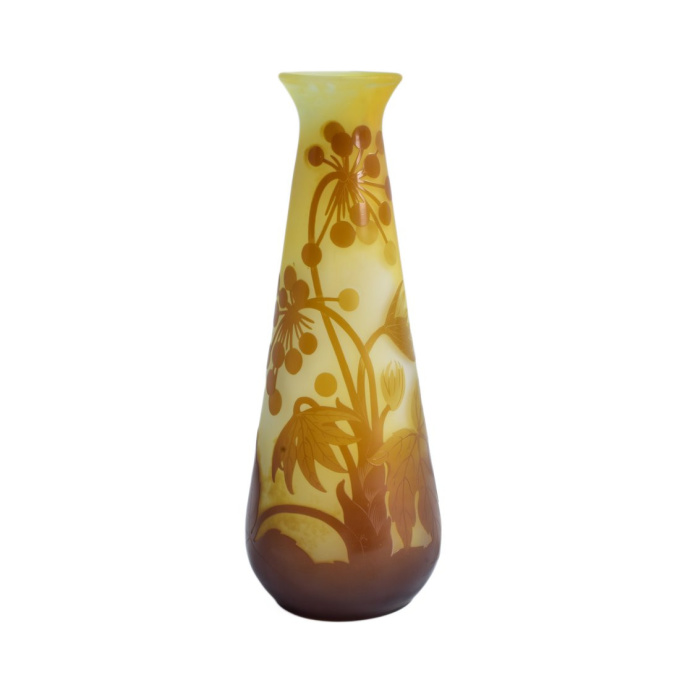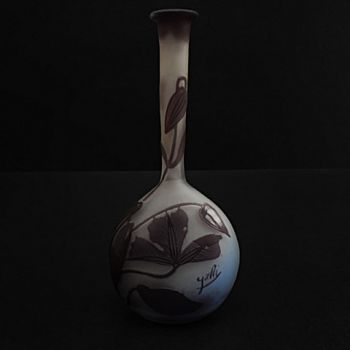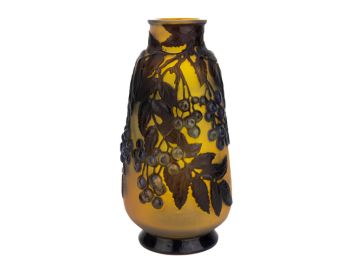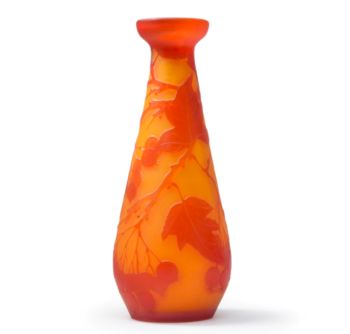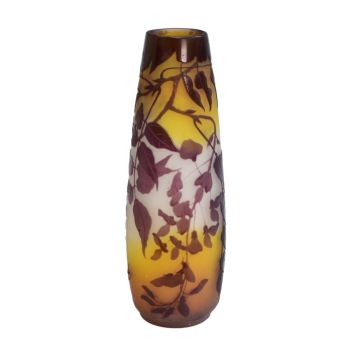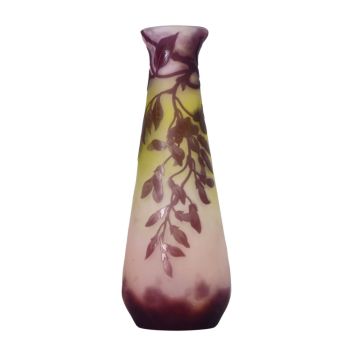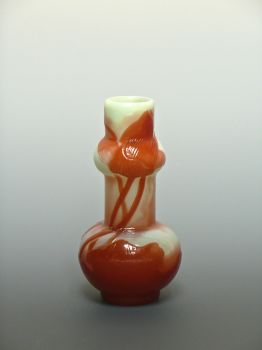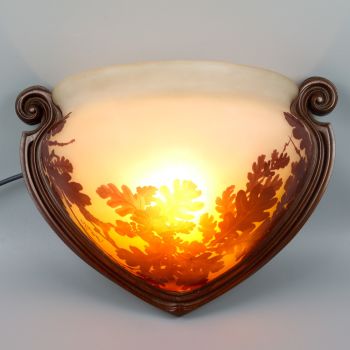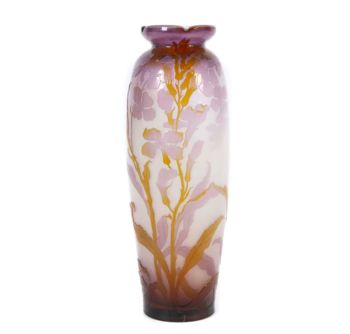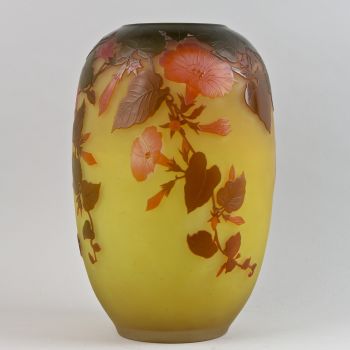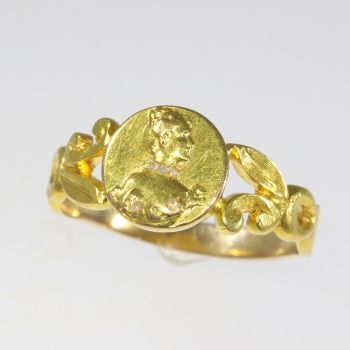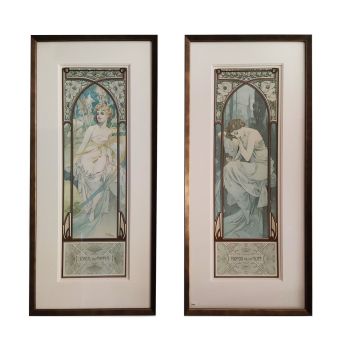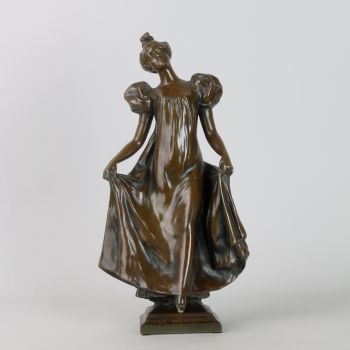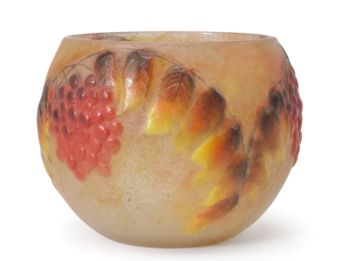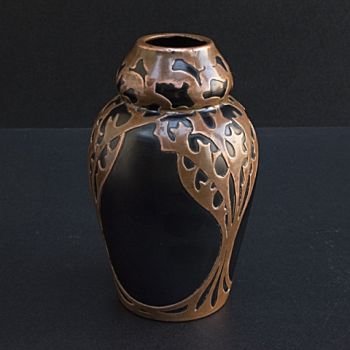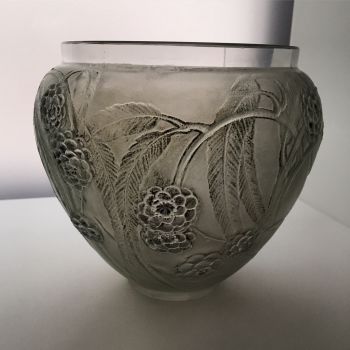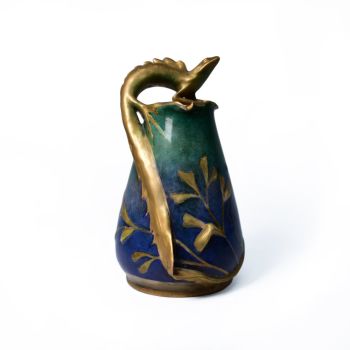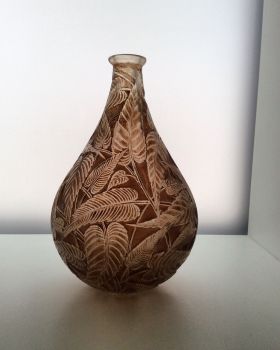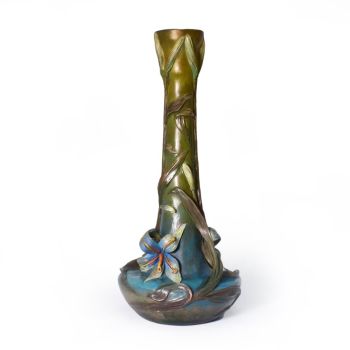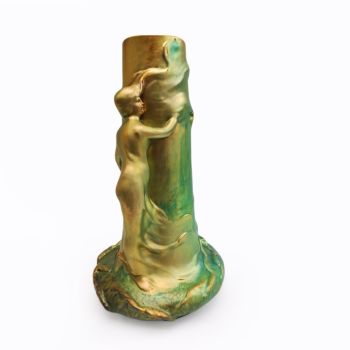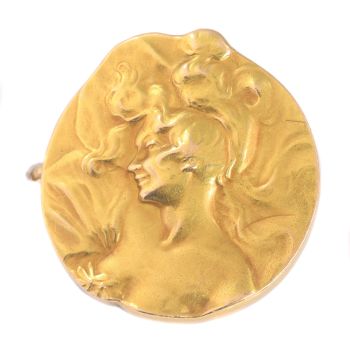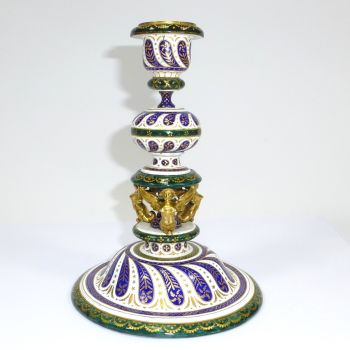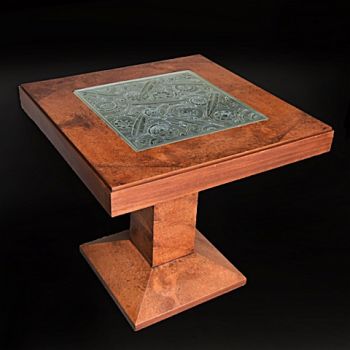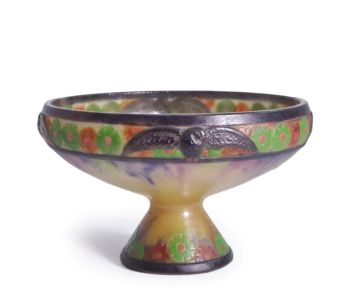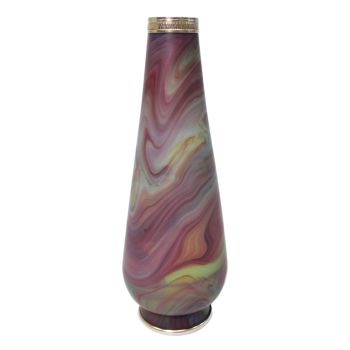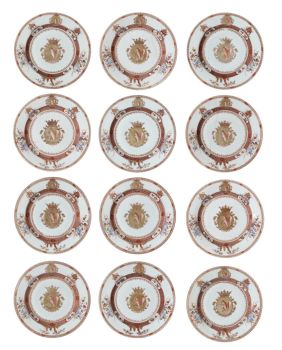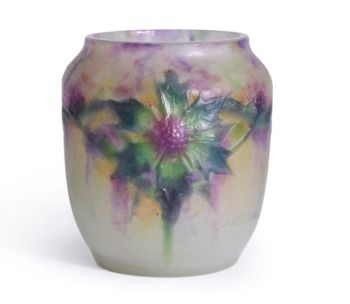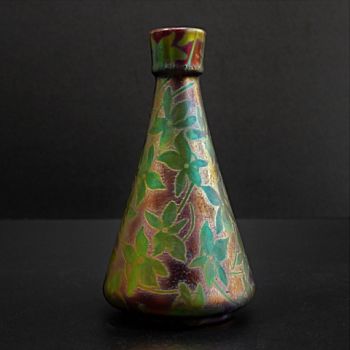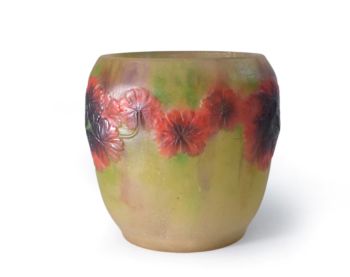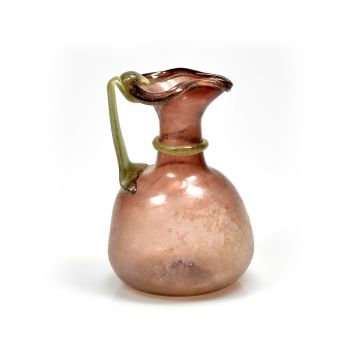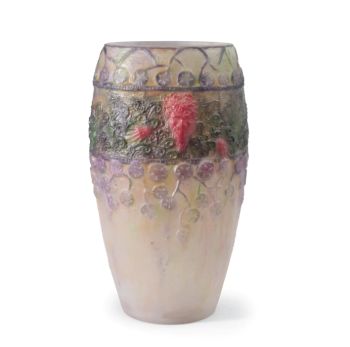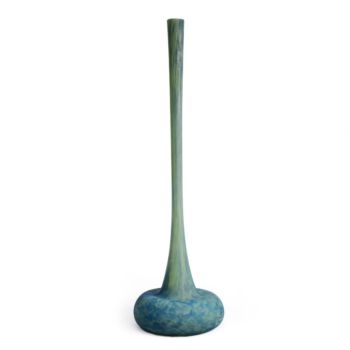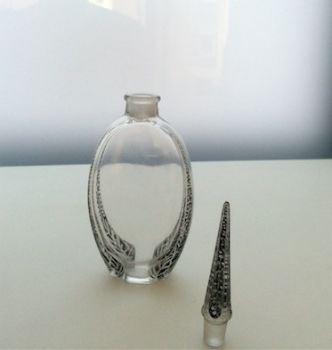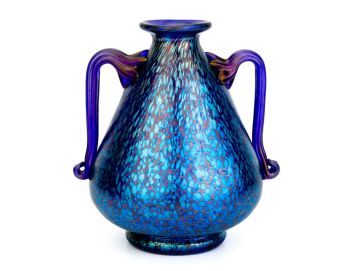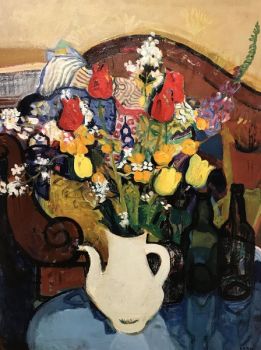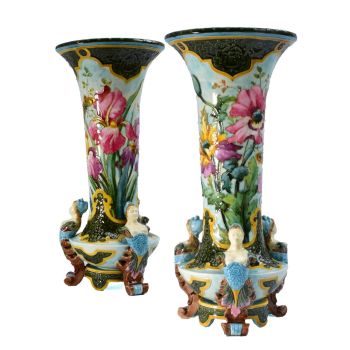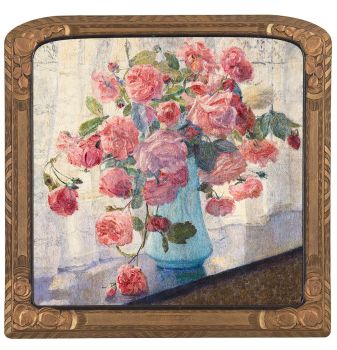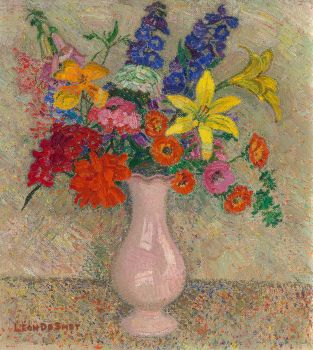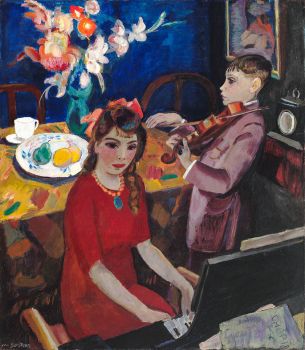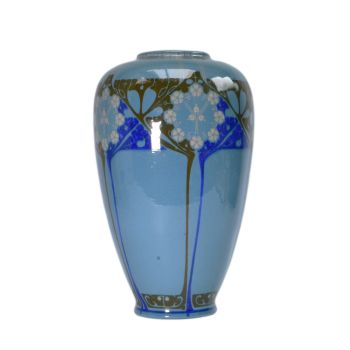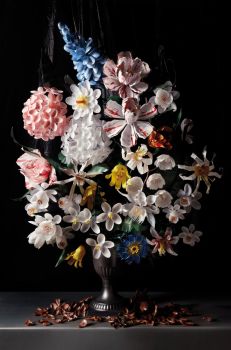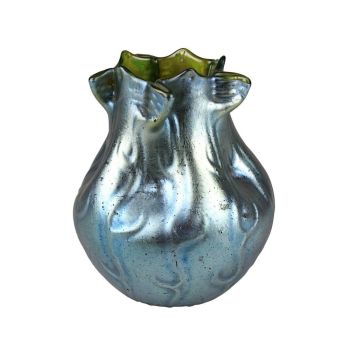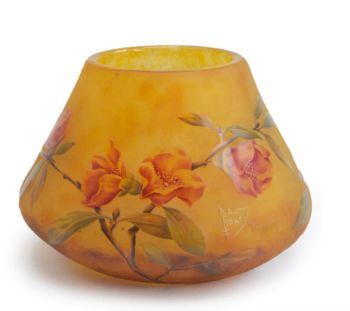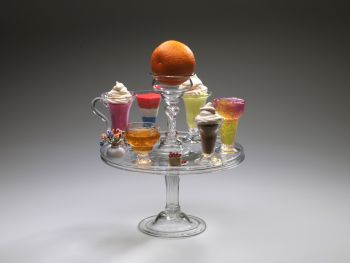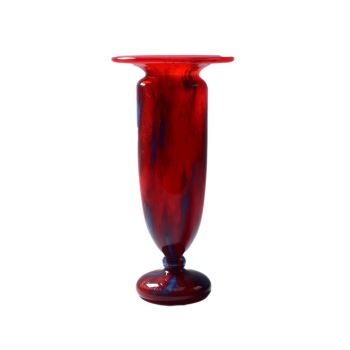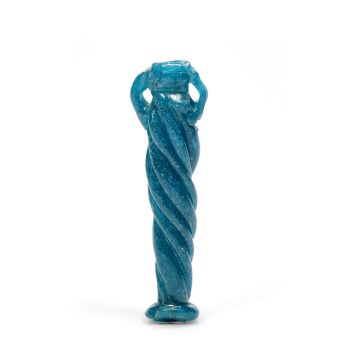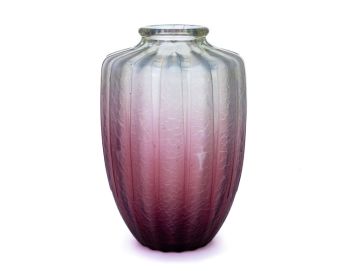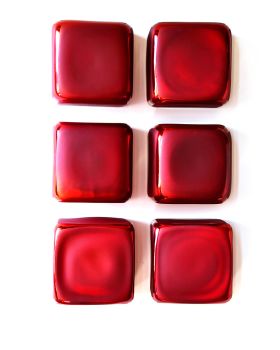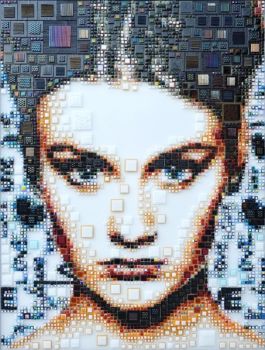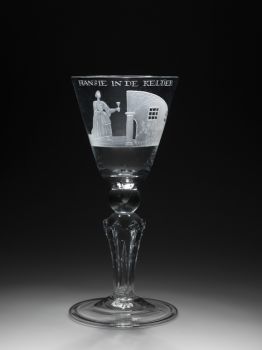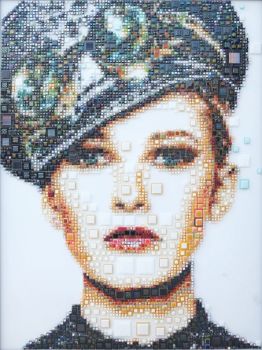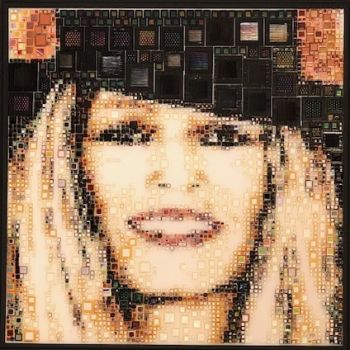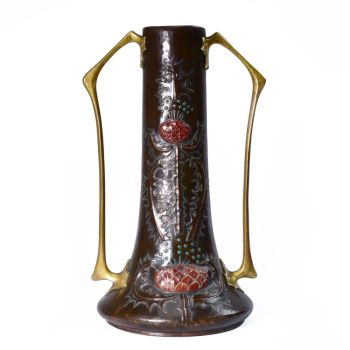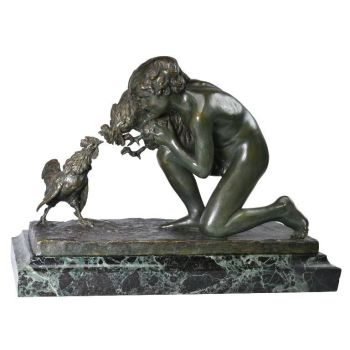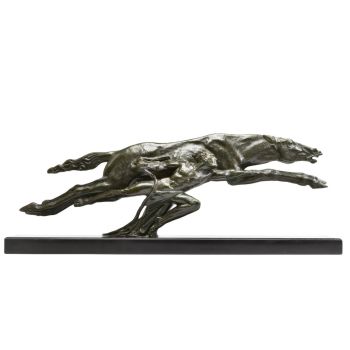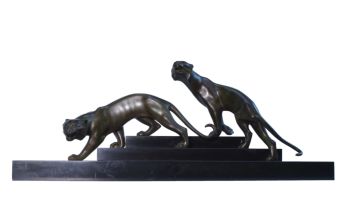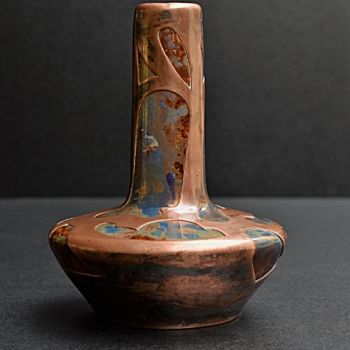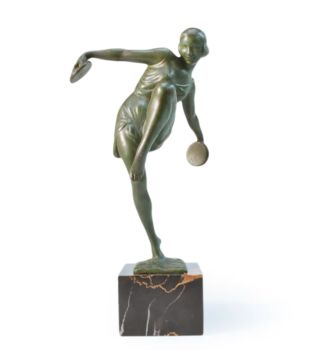Ombelles 1904
Emile Gallé
Glass
32 ⨯ 12 ⨯ 12 cm
€ 1.950
Het Ware Huis
- About the artwork1904, France
Normale prijs
€1.950,00 EUR
Heldere tinten geel en oranjebruin, en een ritmisch decor van een schermbloem op een slank model vaas. Gesigneerd met een ster hetgeen betekent dat deze vaas in Galle's sterfjaar 1904 geproduceerd is.
Emile Gallé, mede oprichter van de ecole de Nancy, is een van de grootste en bekendste glaskunstenaars van Frankrijk. Gallé was behalve kunstenaar en ondernemer ook botanicus, en dat zien we terug in al zijn ontwerpen. Samen met zijn kunstwerken haal je de planten- en insecten-wereld in huis. - About the artist
Emile Gallé was a French artist in glass, wood and ceramics. After several apprenticeships in various European cities, Weimar and Meisenthal amongst others, Emile Gallé became a partner at his father’s glass and faience decoration business in 1867.
Ten years later, he took over the family business and extended its activities to cabinet making in 1885. Previously acknowledged at the Clay and Glass Exposition in 1884, Emile Gallé was honored at the 1889 Paris World Fair with three rewards for his ceramics, glasswork, and furniture. Unfortunately, and to the great regret of Emile Gallé, ceramic work was no longer popular amongst the public, thus he oriented his focus to glasswork, a domain in which he developed and created new fabrication procedures. His research lead to the registration of two patents in 1898, one of which concerned the glass marquetry and the other on glass finish.
His work expresses throughout multiple references his diverse interests, in which nature plays a dominant, but not exlusive, role. His patriotic and political commitments were best expressed at the Paris World Fairs of 1889 and 1900 in such pieces as The Rhine Table (which calls for the return of Alsace-Lorraine to France) and the spectacular installation of The seven pitchers Marjolaine (for the rehabilitation of Dreyfus).Involved early on in the renewal of decorative arts, Emile Gallé distributed in his French, German and English warehouses quality mass-produced work thanks to the industrialization of production. In 1901, he was the founder and the first president of the Ecole de Nancy, the Alliance Provinciale des Industries d’Art.
Are you interested in buying this artwork?
Artwork details
Related artworks
- 1 - 4 / 10
Johann Loetz (Lötz) Witwe Klostermühle
Johann Loetz Witwe - Phänomen Genre 7773 – Orange1900 - 1910
Price on requestAntiques Emporium
1 - 4 / 24- 1 - 4 / 24
Johann Loetz (Lötz) Witwe Klostermühle
Johann Loetz Witwe – Jugendstil Cobalt Papillon vaas1900 - 1910
Price on requestAntiques Emporium
Herman Bogman jr.
Flower still life of a nasturtium in a blue vase1950 - 1965
Price on requestAdelwein Kunst
Johann Loetz (Lötz) Witwe Klostermühle
Johann Loetz Witwe - Phänomen Genre 7773 – Orange1900 - 1910
Price on requestAntiques Emporium
Unknown artist
François-Théodore Legras – Tall “Fleurs de Pommier” apple blossoms vase1900 - 1909
Price on requestAntiques Emporium
1 - 4 / 24Unknown artist
Salver or Tazza with orange glass, jelly and custard glasses.1750 - 1755
Price on requestPeter Korf de Gidts - Antiquairs
Unknown artist
A rare filigrana a retortoli goblet1550 - 1600
Price on requestPeter Korf de Gidts - Antiquairs
1 - 4 / 24- 1 - 4 / 12

